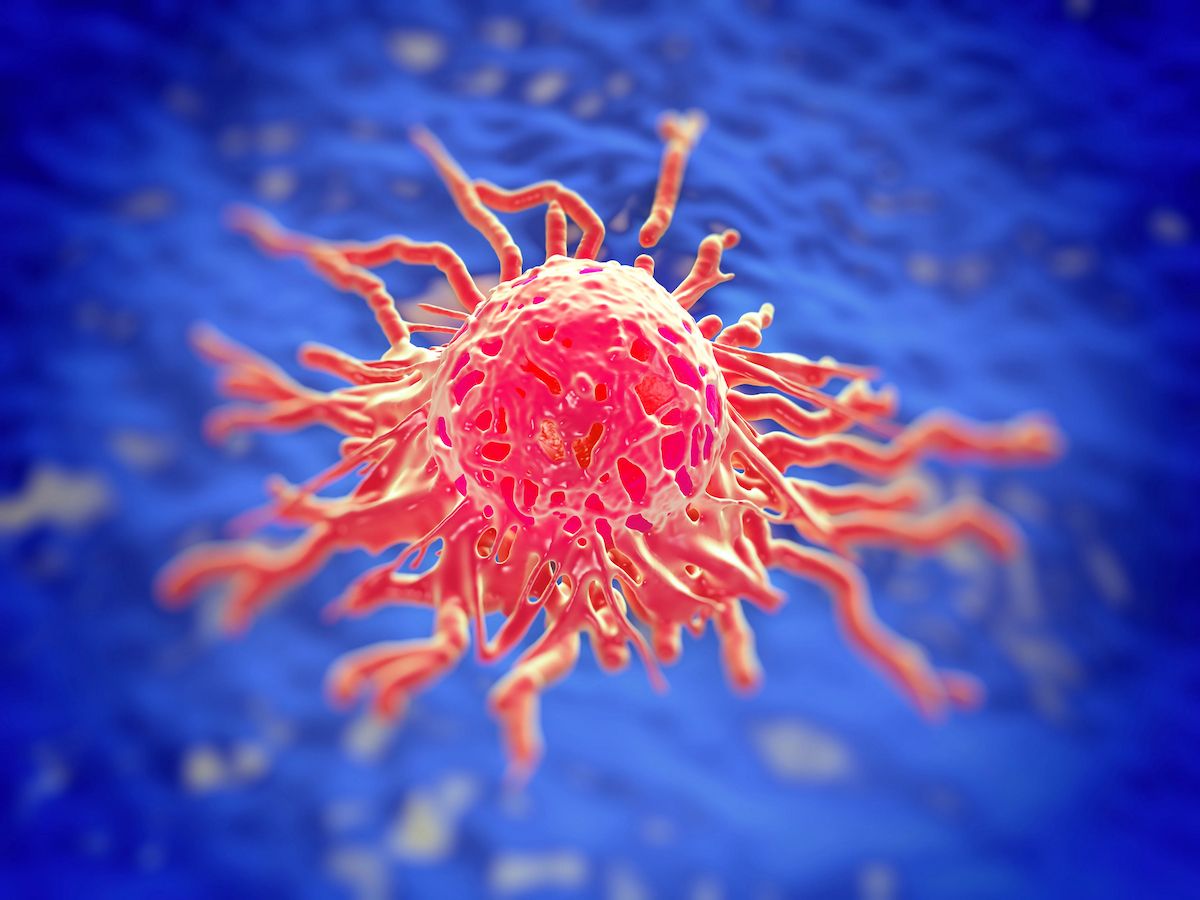Nab-Sirolimus Yields Sustained Responses in Gynecologic Sarcomas
Nab-Sirolimus appears to produce responses in patients with perivascular epithelioid sarcoma regardless of TSC1/TSC2 mutation status.
According to Thomas Herzog, MD, more studies are underway investigating nab-Sirolimus to treat malignant PEComa mTOR-driven cancers of gynecologic origin.

Patients with perivascular epithelioid sarcoma (PEComa) experienced quick, enduring responses following treatment with Nab-Sirolimus (Fyarro; ABI-009), according to subgroup analysis findings from the phase 2 AMPECT study presented during the Society of Gynecologic Oncology (SGO) 2024 Annual Meeting on Women’s Cancer.1
An overall response rate (ORR) of 37.5% (95% CI, 15.2%-64.6%) among 16 female patients with malignant PEComa in uterine, ovarian, pelvic, and retroperitoneal sites, regardless of TSC1/TSC2 mutation status was observed, and all responses were confirmed partial responses (PRs). Moreover, the disease control rate (DCR) in the subgroup was 62.5%, and 4 of 16 patients (25%) experienced stable disease for at least 12 weeks.
This subgroup comprised over half of the evaluable study population, and the ORR from this analysis was similar to the 38.7% ORR observed in the overall population evaluation. Additionally, the DCR in the overall population was 71%. Among all patients with malignant PEComa, the median duration of response (DOR) was 39.7 months, and the median overall survival (OS) was 53.1 months.
Regarding safety, 100% of patients experienced treatment-related adverse events (TRAEs) of any grade, while 63% of patients had a TRAE of grade 3. The most common any-grade TRAEs were stomatitis (81%), fatigue (63%), edema (56%), maculopapular rash (56%), diarrhea (50%), and nausea (50%). Grade 3 TRAEs included stomatitis (25%), hyperglycemia (13%), hypokalemia (13%), increased amylase (6%), vomiting (6%), and diarrhea (6%). There were no grade 4 or 5 TRAEs observed. TRAEs led to dose delay in 63% of patients, dose reduction in 31%, and treatment discontinuation in 6%.
About the Phase 2 AMPECT Study
The primary end point of the AMPECT study was ORR by independent review, and secondary end points included DOR, DCR, and safety/tolerability. Patients were eligible for enrollment if they were 18 or older, had an ECOG performance status of 0 to 1, had histologically confirmed malignant PEComa, had locally advanced or inoperable metastatic disease, and had not received treatment with a prior mTOR inhibitor.
A total of 16 female patients were evaluated in this subgroup analysis. The median age was 61.5 years (range, 39-78). Nine patients (56%) were White and 3 (19%) were Black. Twelve (75%) patients identified as not Hispanic or Latino. Of the overall population of 31 patients, 7 patients had a disease origin from the uterus, 1 from the ovary, 5 from the retroperitoneum, 3 from the pelvis, and 15 from another.
Patients were treated with 100 mg/m2 of intravenous nab-Sirolimus on days 1 and 8 of a 21-day cycle until disease progression or unacceptable toxicity were observed.
About PEComa and the Treatment Landscape
Nab-Sirolimus is the first and only FDA-approved treatment for locally advanced or metastatic malignant unresectable PEComa. The agent was approved in this intent-to-treat population in November 2021.2
Advanced malignant PEComas are associated with poor prognoses and typically demonstrate local invasion or metastases, according to the presentation from Herzog, University of Cincinnati Cancer Center.1 In the metastatic unresectable setting, the median OS ranges from 16 months with chemotherapy to 29 months with targeted therapy. The presence of nab-Sirolimus on the market represents an important treatment option as the standard of care for patients with this rare cancer.
According to Herzog, more studies are underway investigating nab-Sirolimus to treat malignant PEComa mTOR-driven cancers of gynecologic origin.
References
- Herzog T, Dockery L, Dickson M, et al. Response to treatment with nab-sirolimus in patients with perivascular epithelioid cell sarcoma (PEComa) of gynecologic or peritoneal origin: subgroup analysis from AMPECT. Presented at: Society of Gynecologic Oncology 2024 Annual Meeting on Women's Cancer, March 16-18, 2024. San Diego, CA.
- FDA approves sirolimus protein-bound particles for malignant perivascular epithelioid cell tumor. News release. FDA. November 22, 2021. Accessed March 17, 2024. https://tinyurl.com/4wx99snr
Newsletter
Stay up to date on recent advances in the multidisciplinary approach to cancer.